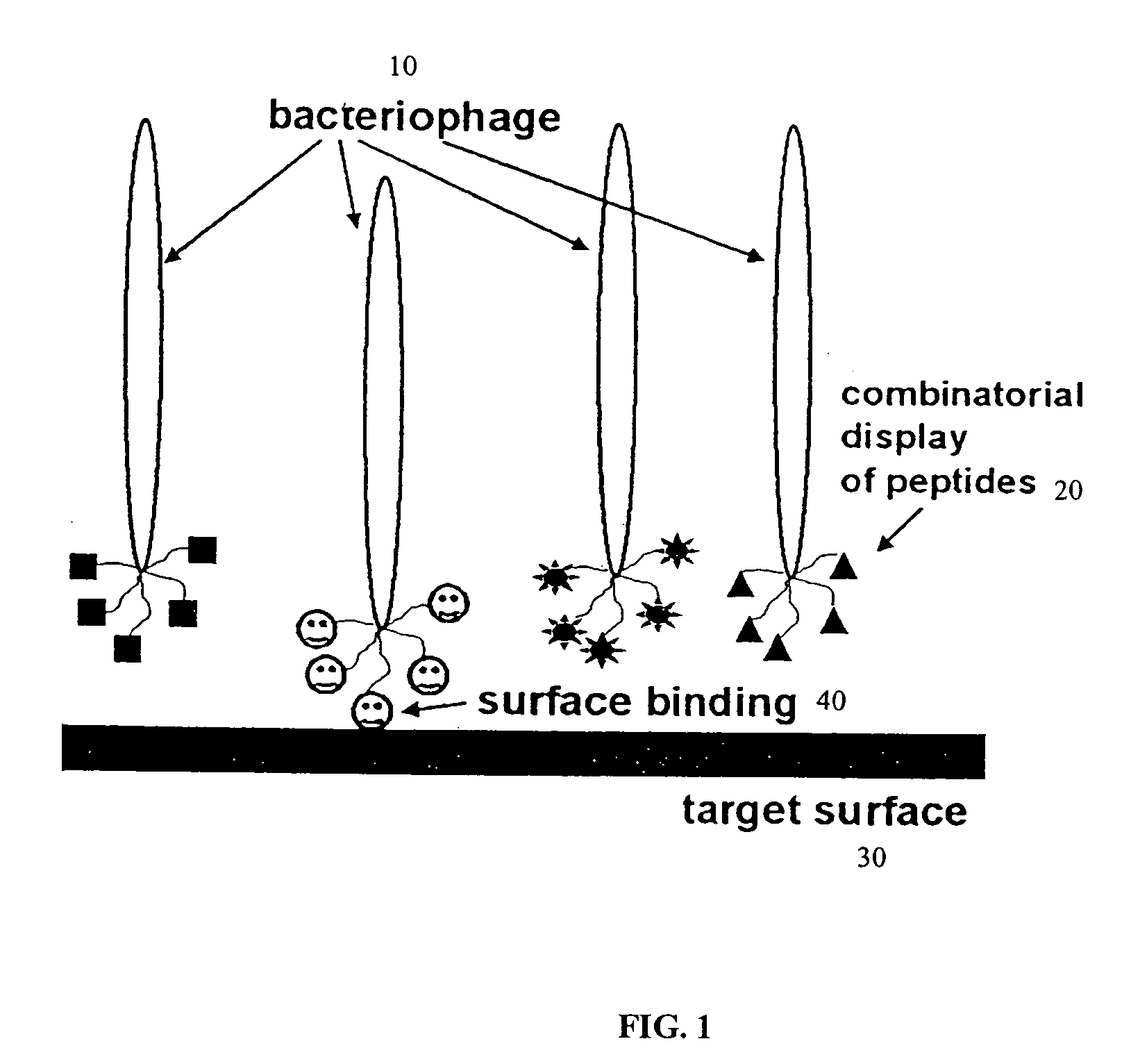Methods for identifying a peptide that binds a geometrical shape
a geometrical shape and peptide technology, applied in the field of selective recognition, can solve the problems of no good solution for reliable binding of peptides or polypeptides to such surfaces, no specific protocol for peptides and polypeptides, and the inability to identify geometrical shapes
- Summary
- Abstract
- Description
- Claims
- Application Information
AI Technical Summary
Problems solved by technology
Method used
Image
Examples
Embodiment Construction
[0007] Methods for bioengineering (e.g., discovering / identifying, designing, and / or synthesizing) molecules that can bind to geometrically and / or atomically structured (e.g., flat, fractal or random) molecular surfaces of a structure / substrate, are provided herein. This type of binding is required in a variety of analytical preparations including SPM (e.g., AFM and STM) scanning of samples such as nanocodes, which can be, for example, peptide based molecules such as enzymes, glycoproteins, oligopeptides, or synthetic nanotags. Also, immobilizing peptide-based biomolecules such as antibodies (i.e., glycoproteins) and reaction enzymes (e.g., kinases and phosphorylases) for biosensors, bioreactors, microelectronics, and microelectrode requires this type of binding.
[0008] Phage display technology allows the rapid discovery, identification, and selection of target peptides with appropriate chemical and / or physical characteristics, compared to a selection by theoretical or intuitive gues...
PUM
| Property | Measurement | Unit |
|---|---|---|
| Shape | aaaaa | aaaaa |
| Surface | aaaaa | aaaaa |
| Hydrophobicity | aaaaa | aaaaa |
Abstract
Description
Claims
Application Information
 Login to View More
Login to View More - R&D
- Intellectual Property
- Life Sciences
- Materials
- Tech Scout
- Unparalleled Data Quality
- Higher Quality Content
- 60% Fewer Hallucinations
Browse by: Latest US Patents, China's latest patents, Technical Efficacy Thesaurus, Application Domain, Technology Topic, Popular Technical Reports.
© 2025 PatSnap. All rights reserved.Legal|Privacy policy|Modern Slavery Act Transparency Statement|Sitemap|About US| Contact US: help@patsnap.com

